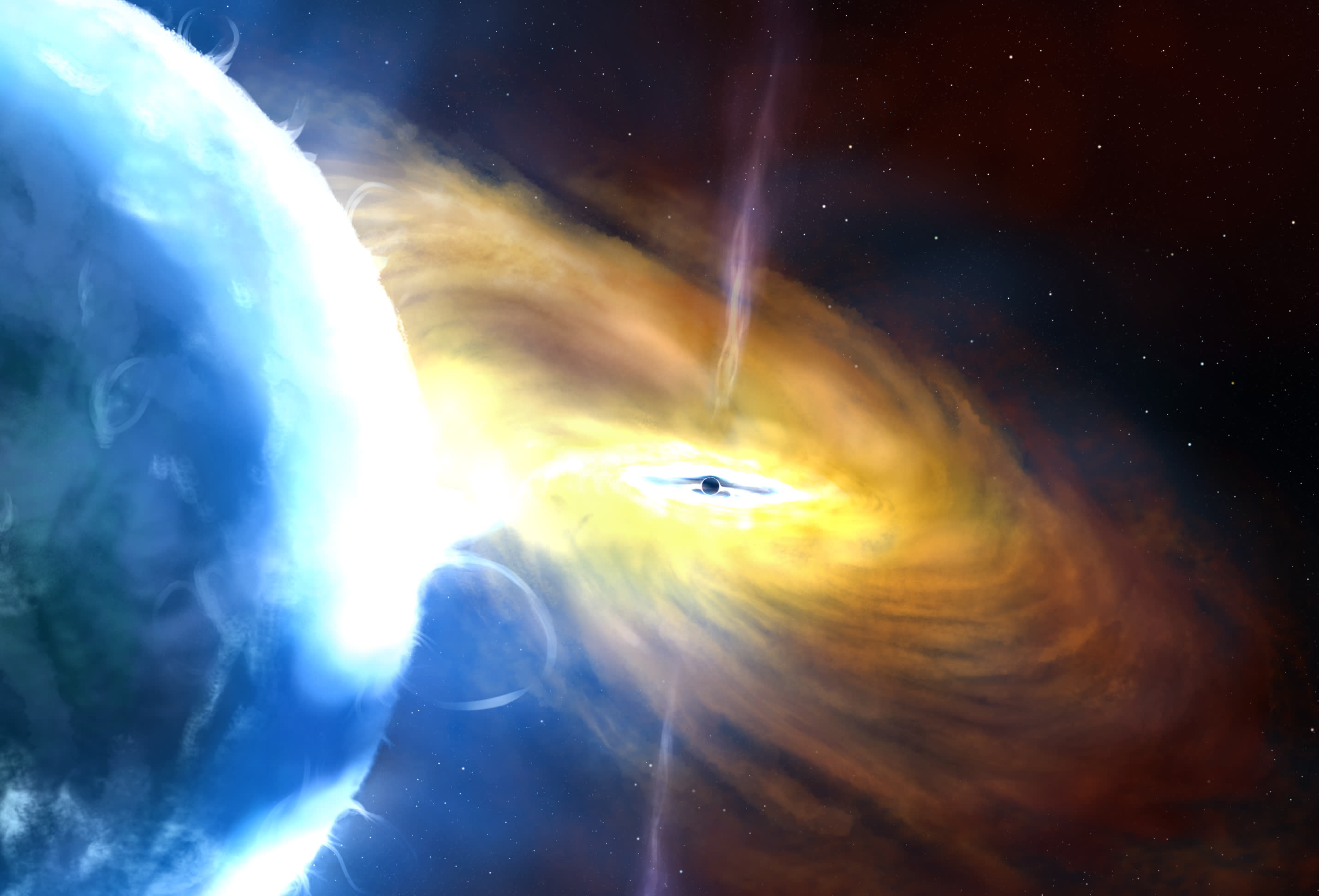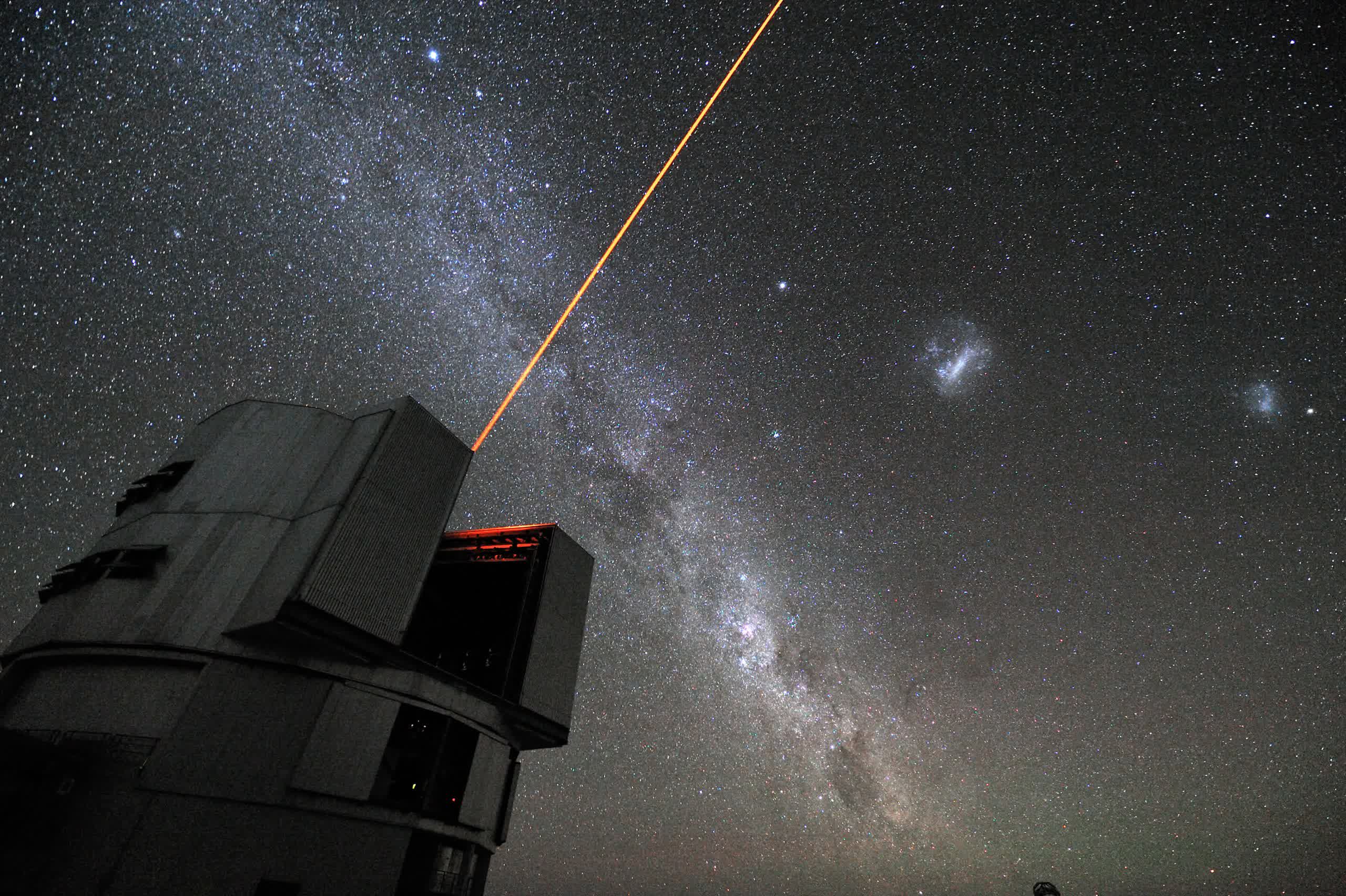The big picture: Quasars are the brightest objects known to exist in the universe, consisting of supermassive black holes that eat enormous amounts of matter. Astronomers recently revealed that they've found a particularly extreme example. As bright and massive as it is, the new record-holding quasar was hiding in plain sight.

Astronomers recently detected what is now considered the brightest-known object in the universe. This intensely large and powerful quasar proved surprisingly elusive, indicating that finding more quasars may require a new approach.
The object, named J0529 – 4351, is a supermassive black hole around 17 billion times the mass of the sun and 500 trillion times brighter. The immense amount of light comes from the accretion disc of dust and gas that the black hole consumes – about one solar mass worth per day. The quasar is so far away that its light takes 12 billion years to reach Earth.

Furthermore, the researchers said that close-up, J0529 – 4351 would look like a storm cell seven light-years across – half-again the distance between the sun and its nearest neighbor, Alpha Centauri. Temperatures inside the cell can reach 10,000 Celsius, with winds fast enough to circumnavigate the Earth in a second.
Scientists previously assumed that supermassive black holes ate material over hundreds or thousands of years, but further study suggests they can consume gas and dust much more quickly. A recent simulation indicated that one could eat the contents of its accretion disc within months while new material constantly replenishes the disc, so a quasar devouring a solar mass a day doesn't appear far-fetched.
Although around one million quasars have been discovered over the last several decades, detecting them has proven challenging. Finding quasars doesn't necessarily require powerful telescopes but rather precise data and observation of large portions of the sky. Without that data, quasars appear indistinguishable from ordinary stars.
Machine learning has been proposed as a solution, but the extreme rarity of quasars makes it challenging for the technology to accurately identify them. For example, a low-resolution spectrum of J0529 – 4351 has existed in a public data set since 2022, but machine learning classified it as a typical star, while human Astronomers could easily identify it as a quasar. Its existence was confirmed by combining observations from the New South Wales Siding Spring Observatory and the ESO's Very Large Telescope Interferometer in Chile.
https://www.techspot.com/news/101965-universe-brightest-object-eats-mass-sun-every-day.html